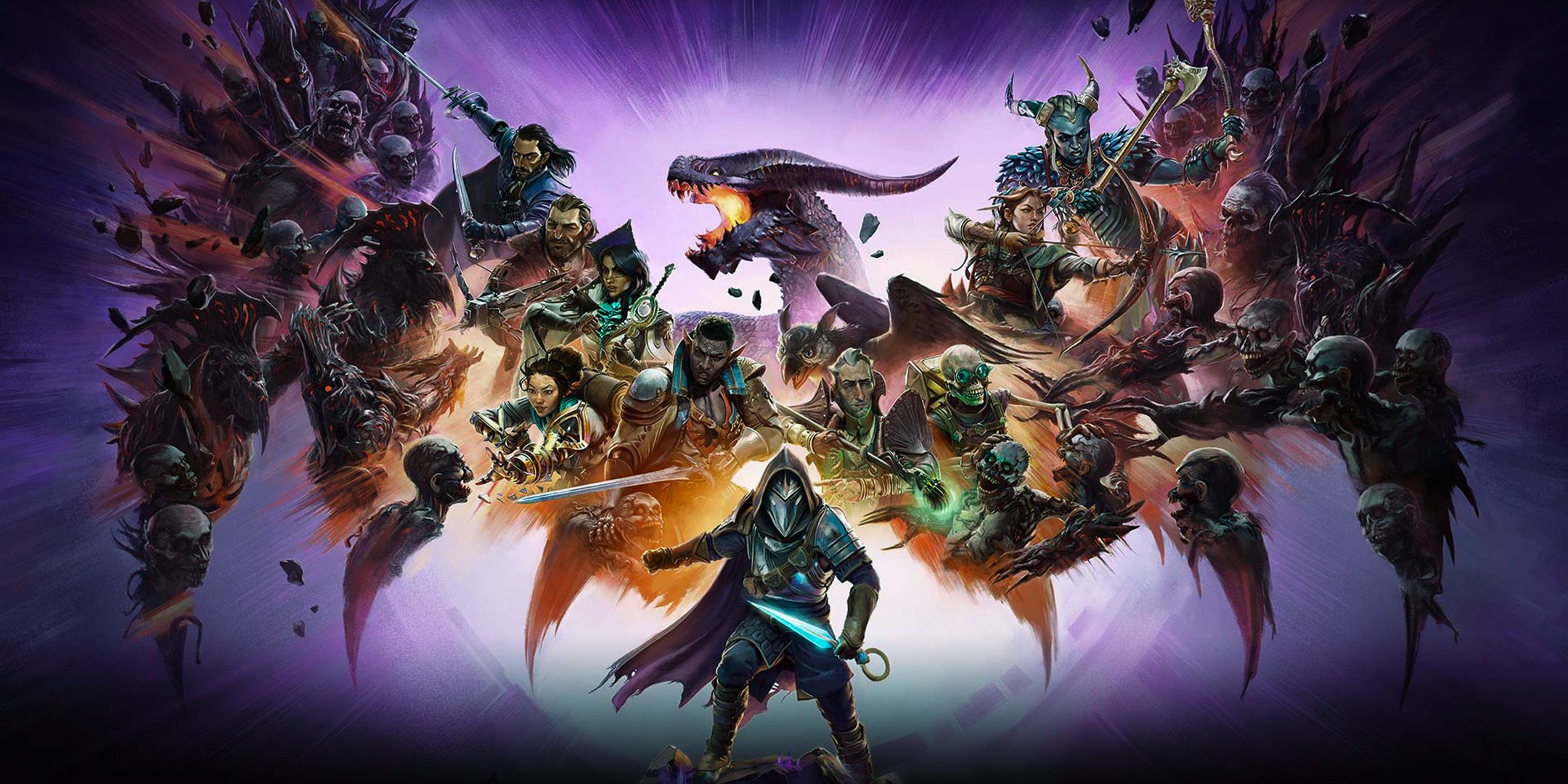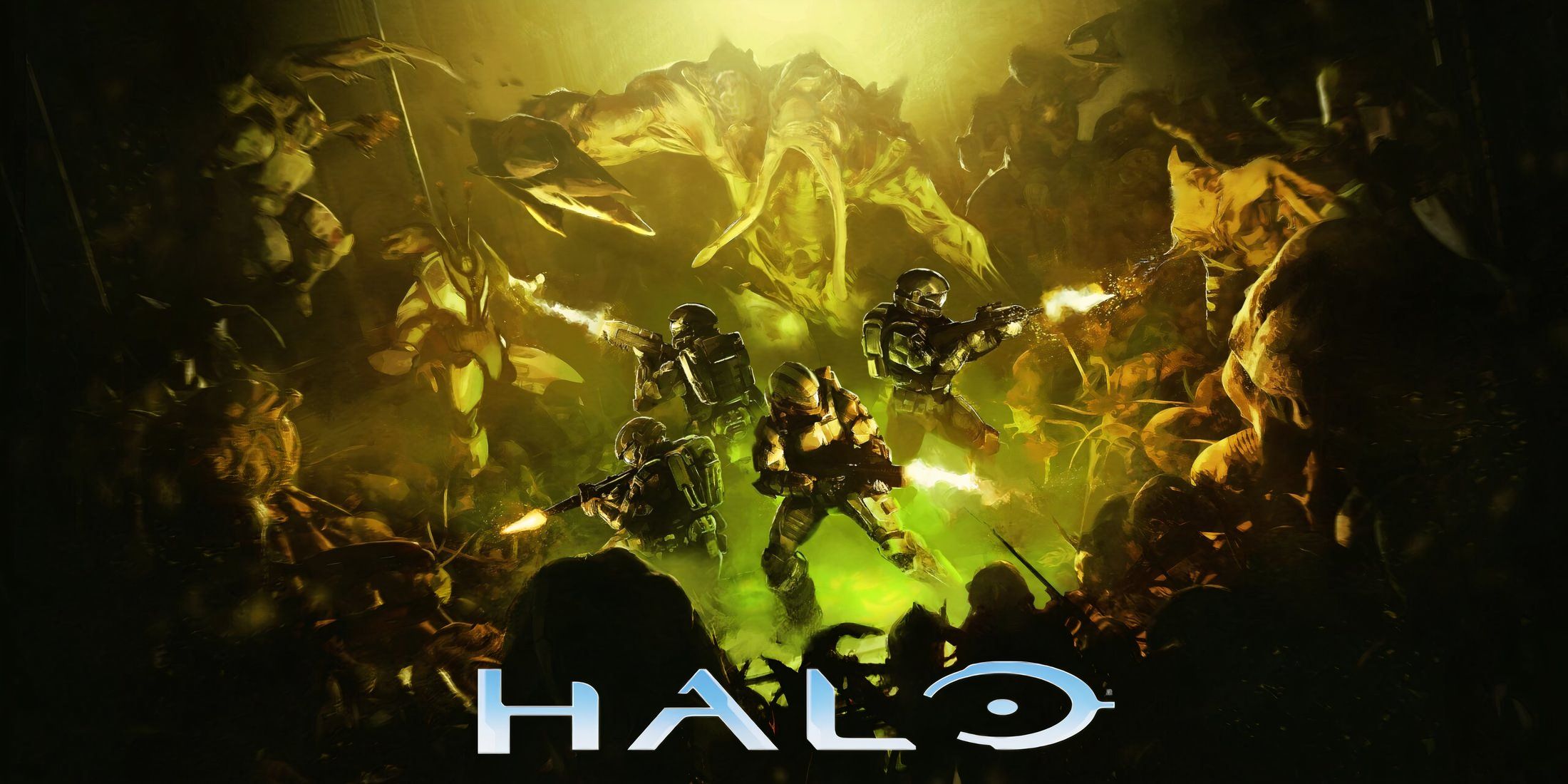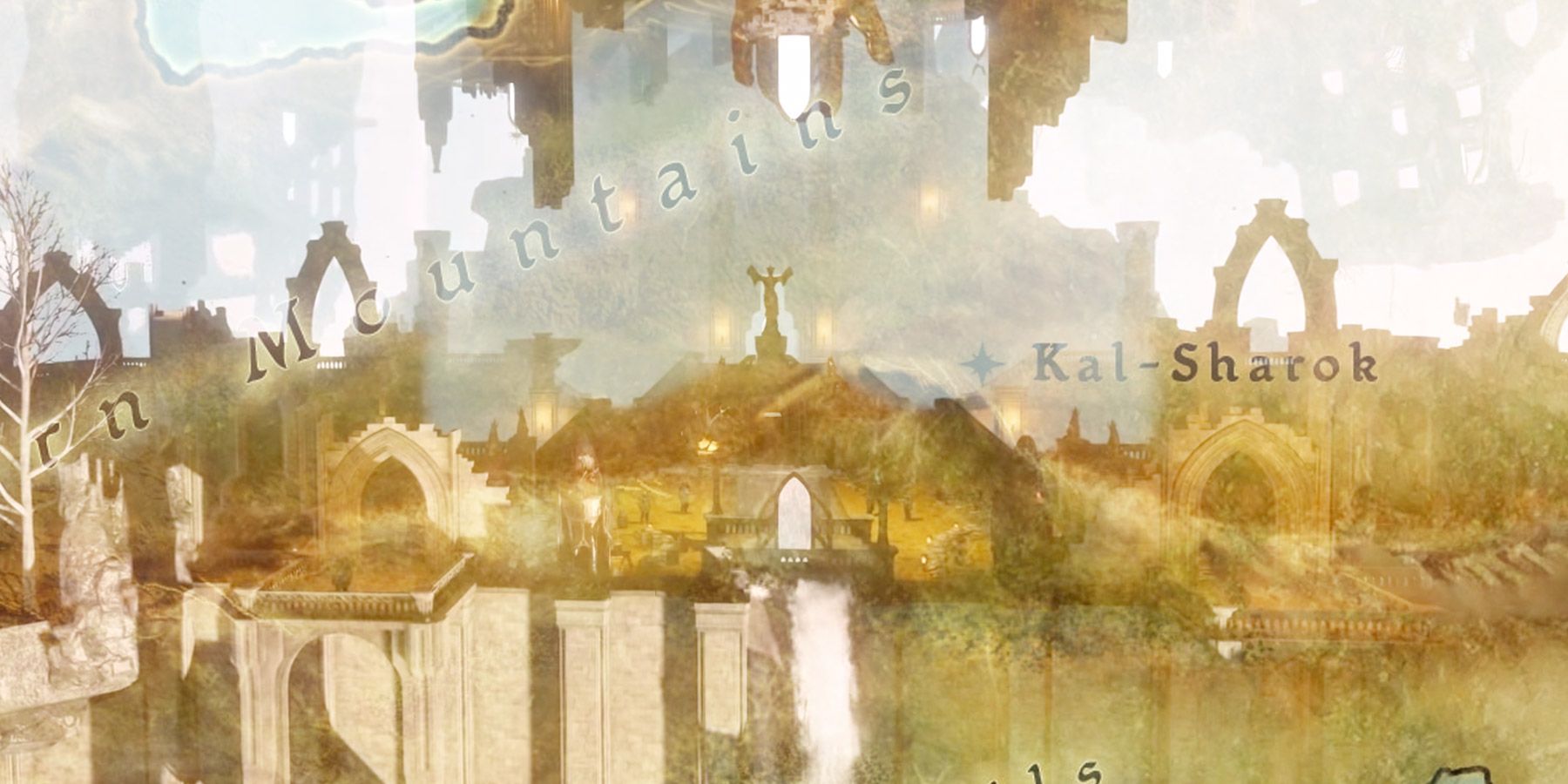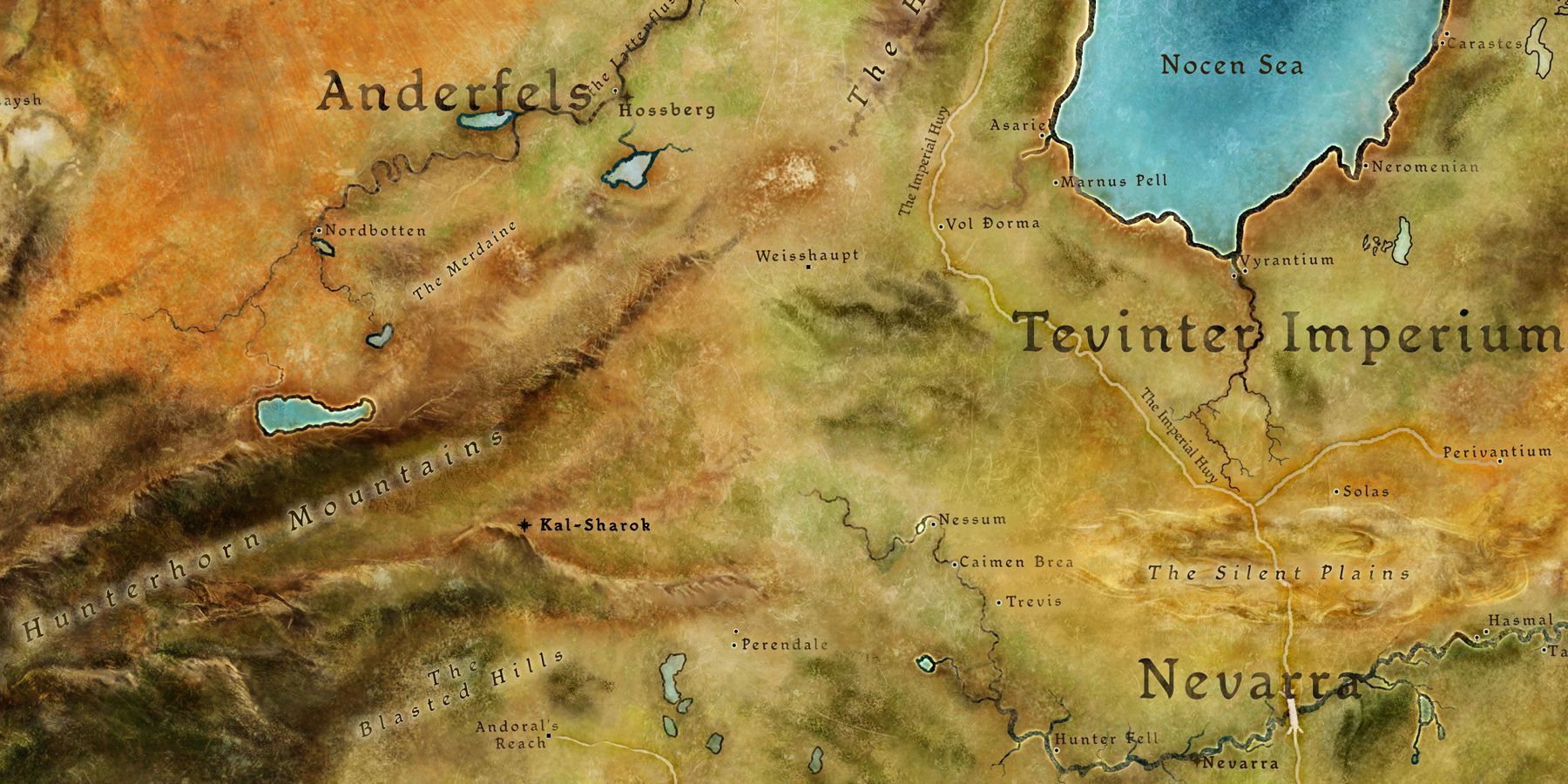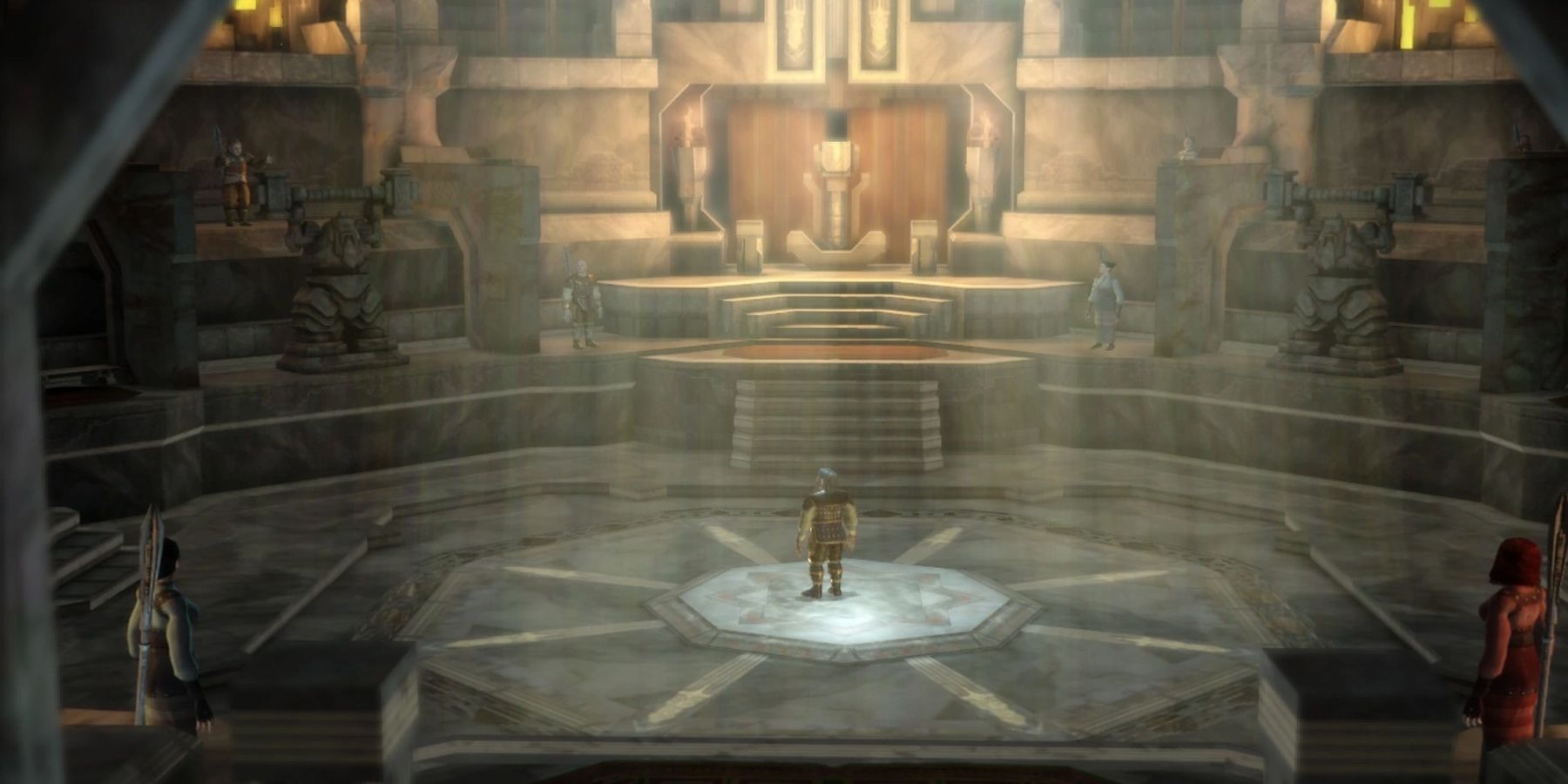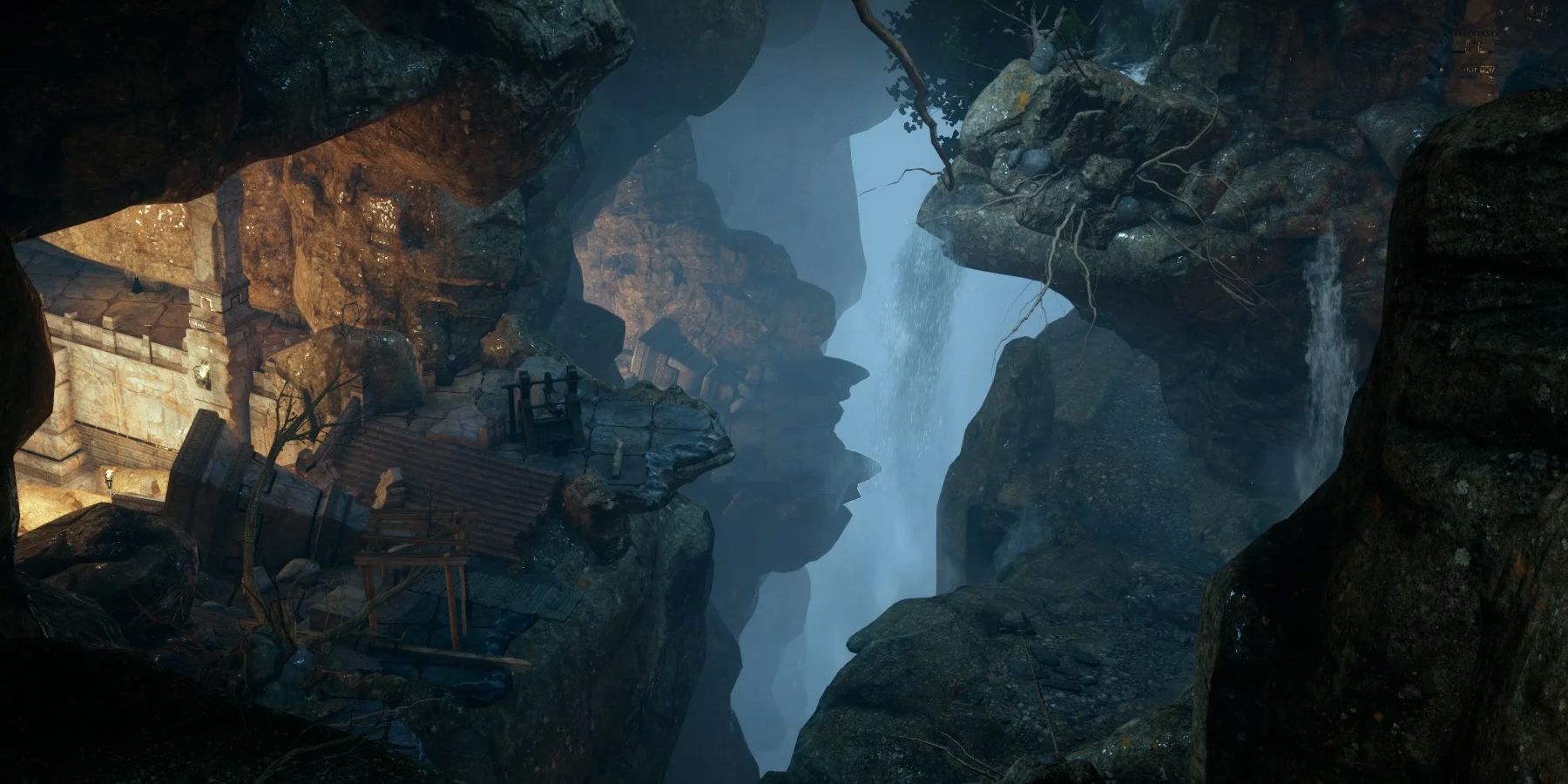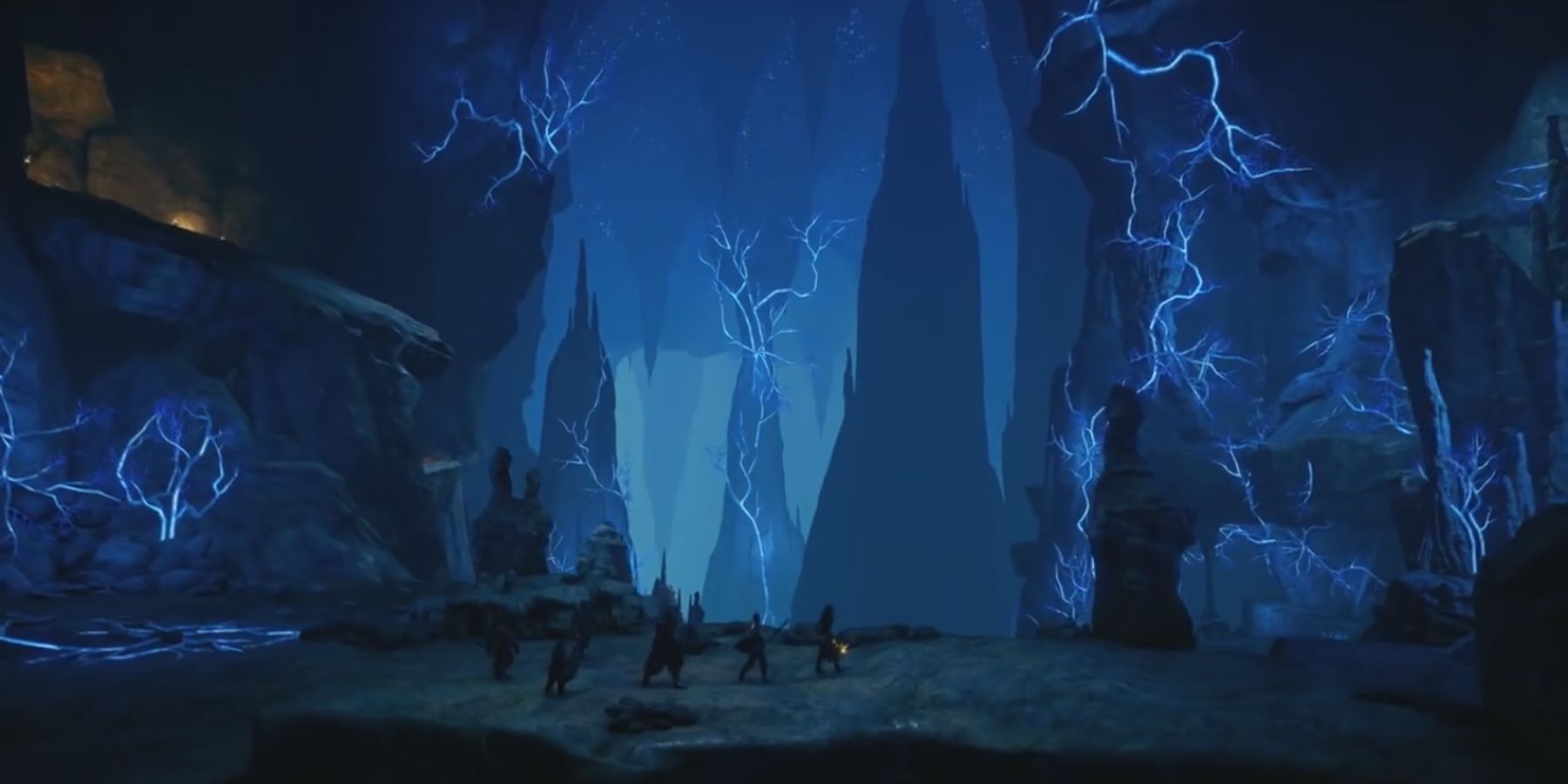While BioWare has revealed relatively little about Dragon Age: Dreadwolf, fans at least have a good idea of its setting. The epilogue to Dragon Age: Inquisition's Trespasser DLC revealed that the next game occurs primarily in the Tevinter Imperium. Players will also visit other locations in northern Thedas, such as the Grey Warden stronghold of Weisshaupt Fortress. There is also a non-zero chance that Dragon Age: Dreadwolf may take players to the Dwarven city-state of Kal-Sharok.
Located not far from Dreadwolf's primary setting of the Tevinter Imperium, it is one of the last remnants of the ancient Dwarven Empire. However, despite references to it going back to the first game, the cities remained relatively mysterious and only had a small role in the series so far. Still, there is some interesting information about Kal-Sharok that players might want to know going into Dragon Age: Dreadwolf.
The History of Kal-Sharok
The Dwarven city of Kal-Sharok lies beneath the northern part of the Hunterthorn Mountains, which separate the Orlesian Empire and the Kingdom of the Anderfells. It's also relatively close to Dragon Age's Tevinter Imperium, and this proximity made it a vital part of the trade between the Tevinters and Dwarves. Its wealth and power led Kal-Sharok to become one of the largest and most important Dwarven cities and the seat of the Dwarven Empire, before the capital was relocated to Orzammar 2,000 years ago.
Dragon Age: The World of Thedas describes how this led to tensions between Kal-Sharok and Orzammar, as the former pursued closer ties with the surface and chafed under Orzammar's taxes. However, the Darkspawn invasion during the First Blight separated Kal-Sharok from Orzammar. Even as the Grey Wardens turned the tide against the Darkspawn on the surface, the Dwarves continued to suffer defeat after defeat underground. This led Dwarven High King Threestone to abandon the rest of the empire, declaring Kal-Sharok and the other kingdoms lost to the Darkspawn.
The Dwarves of Orzammar reestablished contact with Kal-Sharok in the year 9:12 Dragon, 950 years after its abandonment and only eighteen years before the events of Dragon Age: Origins. Unfortunately, there is relatively little information on what happened in Kal-Sharok before Orzammar reestablished contact nearly a millennium later. However, it's believed that the rulers of the other Dwarven kingdoms fled there when the empire fell. Despite suffering heavy casualties, the northern Dwarves managed to hold out against the Darkspawn horde.
The specifics of how they achieved victory are unknown, though Kal-Sharok had help from an order of warriors known as the Rock-Knockers. Like Orzammar's Legion of the Dead, the Rock-Knockers are sworn to battle the Darkspawn whatever the cost. However, they are generally more pragmatic and less committed to the Legion's goal of an honorable death.
Kal-Sharok's Culture and Politics
Over 900 years of isolation is enough time for the Kal-Sharok Dwarves to deviate wildly from their brethren in Orzammar. This includes speaking a slightly different language and also a distinct culture. While virtually all the Dwarves in Dragon Age 2 and Dragon Age: Inquisition were exiled surfacers, Dragon Age: Origins depicts the Dwarves of Orzammar as a rigidly hierarchical society. However, Kal-Sharok is a shockingly egalitarian society by comparison. While Dragon Age's Dwarven Caste System still exists there, it's not essential to day-to-day life like it is in Orzammar.
Similarly, unlike in Orzammar, Kal-Sharok's Assembly is not made up exclusively of representatives of the noble houses, as members can be of any caste or family. The city also has no king, with the Assembly choosing a citizen to serve as Paragon-Elect. While the specifics of Kal-Sharok's internal politics remain mysterious, the Dwarven city-state may be the only known example of democracy in the Dragon Age universe.
Kal-Sharok handles Dragon Age's Dwarven Paragons very differently from Orzammar. As Dragon Age: Origins players learn, Paragons are Dwarves who have distinguished themselves by doing great deeds, and only Orzammar's Assembly can grant the title. Kal-Sharok's Assembly also grants the title of Paragon to those they deem worthy, but it is for promises rather than the deeds accomplished. They also do not build statues of their Paragons, instead commemorating dead Paragons with gigantic wall carvings in the Deep Roads. However, neither Orzammar nor Kal-Sharok recognized the other's Paragons.
Kal-Sharok's Isolationism
Disagreement over Paragons is a symptom rather than the cause of the animosity between the two Dwarven cities. Kal-Sharok Dwarves still harbor hatred towards their southern cousins over Orzammar's decision to abandon them to the Blight. While some Orzammar nobles encouraged reopening trade and diplomacy with Kal-Sharok, Orzammar's then-king Endrin refused to accept anything short of Kal-Sharok's submission to the throne. Kal-Sharok refused, and the bitterness continued to fester.
It's unclear if Kal-Sharok bears any ill will towards the surface Dwarves. However, a Codex page from Dragon Age: Inquisition indicates Orzammar Dwarves would likely face open hostility if they showed up unannounced. This could be a potential challenge for Dwarven Dragon Age: Dreadwolf players, assuming a potential Dwarven player character doesn't hail from Kal-Sharok themselves.
This is not to say that Kal-Sharok is friendly with humans and other surface dwellers. However, the city-state's particular form of isolationism differs from that of Orzammar. Orzammar's rulers care little for the outside world. One Codex in Dragon Age: Inquisition describes how the city's nobility treats outside trade almost as a natural phenomenon rather than something worth being invested in. On the other hand, Kal-Sharok closes itself off out of precaution rather than disinterest, and its merchants are intimately familiar with human goods and commerce.
Dragon Age: Inquisition also shows that Kal-Sharok occasionally works with outsiders, provided the cooperation is on its own terms. They also understand the importance of standing with the few allies they decide to make, as indicated by the Kal-Sharok saying, “Family through war, family into peace.”
Kal-Sharok's Biggest Mystery
Still, it's not just culture and politics that make Kal-Sharok unique. The millennia of isolation and prolonged contact with Darkspawn have also altered the Dwarves there physically. They often cover their faces with hoods while interacting with outsiders, and those who trade with them describe something strangely unsettling about them. The city's Codex entry from Inquisition describes a Kal-Sharok merchant's gaze as reminiscent of both the Grey Wardens and corrupted Darkspawn.
The implication here seems to be that the inhabitants of Kal-Sharok are infected with the Blight. This has enormous implications since humans, Dwarves, and other races infected with the Blight usually die or mutate into ghouls. Even the Grey Warden's Joining Ritual seen in Dragon Age: Origins only delays the inevitable. This raises the question of whether the mysterious Dwarves of Kal-Sharok practice a similar ritual or have found some other means of coexisting with the Blight. Hopefully, Dragon Age: Dreadwolf sheds additional light on these dwarves and their mysterious city.
Dragon Age: Dreadwolf is in development.

